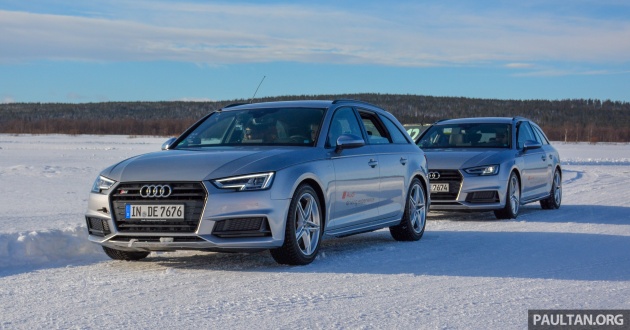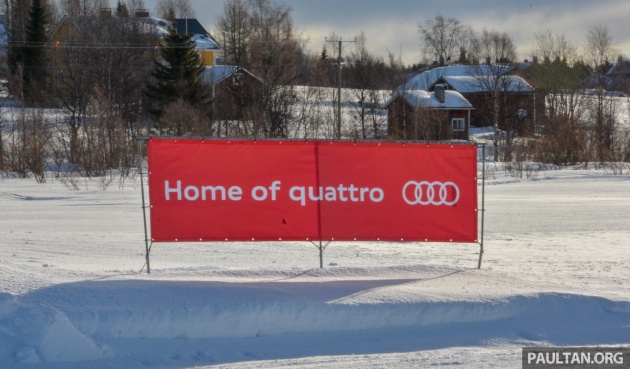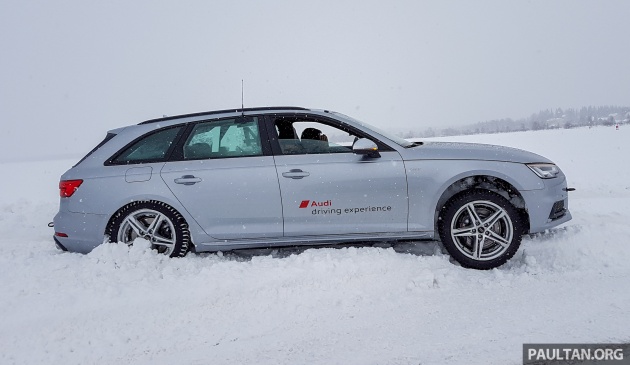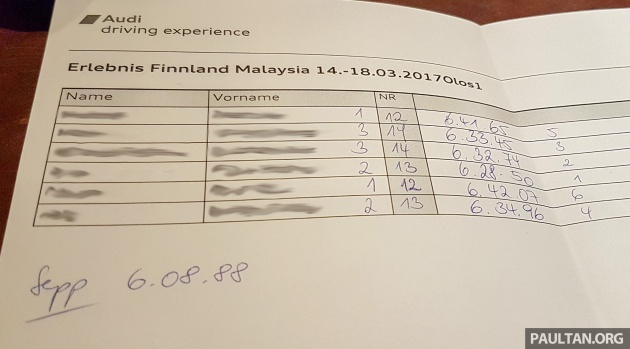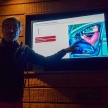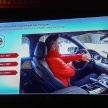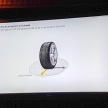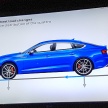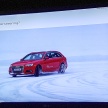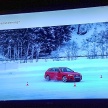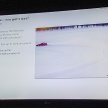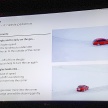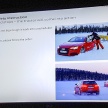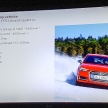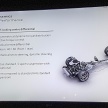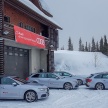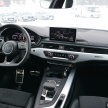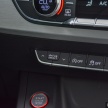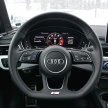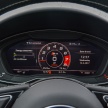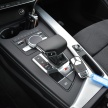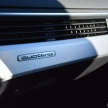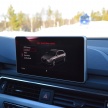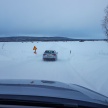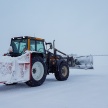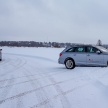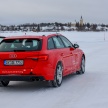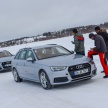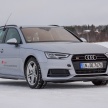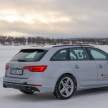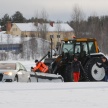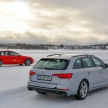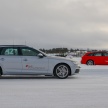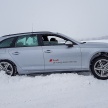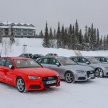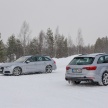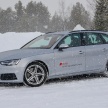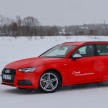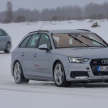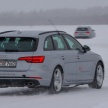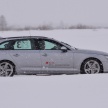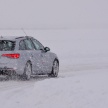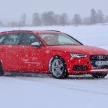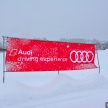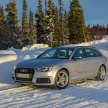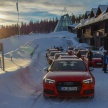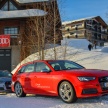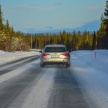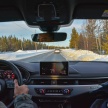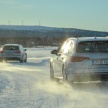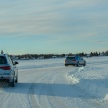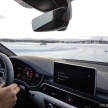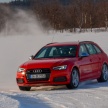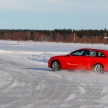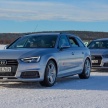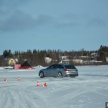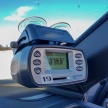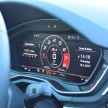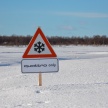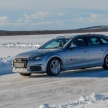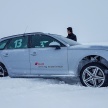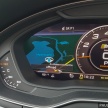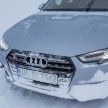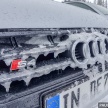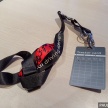We were told by Josef ‘Sepp’ Haider at the beginning that we would become pretty proficient at ice driving within just three days, which sounded like a pretty ambitious thing to say. How would it be possible that a bunch of motoring journalists – some of which (this writer included) have never seen snow in their life before (as in me), much less step on it – be able to do such a thing?
Naturally, the former rally driver-turned-instructor assured us that if we adhered to his lessons well enough, there wouldn’t be much of an issue. Sounded good, until he told us that the car we were learning to drive on very slippery surfaces in was an Audi S4 Avant, which has a 3.0 litre TFSI V6 producing 354 hp and 500 Nm of torque.
So, take one part inexperience, throw in a powerful estate car, a dash of anxiety and an instructor that expects each of his students to be able to drift gracefully on ice within three days. Sounds like the perfect setup for a glorious calamity then? Here’s what when down during our time in Finland for the Audi Ice Driving Experience.
For the uninitiated, the Audi Ice Driving Experience is one of several driving programmes offered by the four-ring carmaker. The goal with each programme is to allow participants to experience the dynamic capabilities, performance and technologies that are featured in Audi vehicles, with our trip focusing on the brand’s venerable quattro permanent all-wheel drive system.
Firstly, some history. In January 1977, Jörg Bensinger and his team travelled to the Finnish municipality to test the Volkswagen Type 183, or Iltis, and its four-wheel drive system in winter conditions. There, he discovered the Iltis outperformed front-wheel drive Audis on snow and ice, despite being down on power. The idea was then embedded in Bensinger’s head – to create a four-wheel drive road car.
Several prototypes and visits to the Audi and Volkswagen parts bins later, the Ur-Quattro was revealed at the 1980 Geneva Motor Show. Aside from showcasing quattro, the model also came with another Audi staple – the five-cylinder engine – and a digital LCD instrument cluster later on, adhering to the company’s famous slogan, Vorsprung durch Technik, or advancement through technology.
Look up the history books and you’ll find the Quattro became a dominant force in the world of rallying. In 1981, Michèle Mouton became the first female driver to win a world championship rally piloting a Quattro, before finishing runner-up in the drivers’ championship in 1982. Famous names that have won a championship in a Quattro include Walter Röhrl (1980 and 1982), Hannu Mikkola (1983) and Stig Blomqvist (1984).
The quattro system can now be found on a large selection of Audi models today, including on Audi Sport S and RS cars. Unfortunately, while we do get a few quattro-equipped Audi cars in Malaysia, we’re left wanting for more Audi Sport models to be introduced. After all, BMW offers a selection of M models, while Mercedes-AMG have its ‘43’, ’45’ and ’63’ ranges, so why should Audi miss out on this contest, right?
With the S4 being an absentee back home, there was some eagerness to see what the latest generation of the technology is capable of in Audi’s hot wagon, especially in demanding winter conditions. Coincidentally, our icy learning ground is a frozen lake (Muonionjärvi) located in Muonio – the very municipality visited by Bensinger in the past, and the birth place of quattro.
As with most driving programmes, there was the obligatory briefing session that familiarised us with the concepts of understeer, oversteer, wheel load changes, limit of friction and powersliding. This was followed by an introduction to proper seating and steering positions, as well as the S4 Avant and its quattro system.
With that done and dusted, Sepp led us out to the frozen lake that borders Sweden, onto a small circuit and told us to turn off the traction control system completely. Thus began our first exercise – drift around a simple corner – with our instructor providing us with a demonstration that looked simple enough.
The progression of steps, as we were told, is as follows: turn in, feel the front understeer, straighten out the wheel, feel the rear step out until the car is pointed the right direction, gently apply the throttle to get through the corner, countersteer towards the exit (if needed) and head through the exit gate.
Of course, telling someone to do something and actually doing it are two separate things. In theory, we were supposed to feather the throttle, but the alluring growl of the V6 resulted in a heavy right foot. This resulted in several instances where the car went wider than necessary.
Thankfully, the snow walls along the edges of the track were distant enough to deal with the repercussions, although braking hard isn’t a surety on ice. With enough failure, and reminders to slow down, some success did eventually come to fruition. The sequence of steps soon became pretty natural, and made this type of vehicle control feel somewhat “easy” to manage.
It also helped that the quattro system was constantly shifting power to each gripping wheel, ensuring minimal slip and maximum traction. This is thanks to the system’s mechanical self-locking centre differential and dynamic torque distribution. By default, the torque distribution is split 40:60 front and rear, but if needed, 100% of torque can go to one end.
On ice, where it’s constantly slippery, the system transfers torque between axles seamlessly without fuss, maintaining stable vehicle dynamics. It isn’t magic, and you’ll still need to provide proper steering input to get around a corner, but it is reassuring that the system is doing its best to make sure all that power is put to good use – even if the traction control is completely off.
For day two, Sepp brought us to a larger, but narrower track on another part of the lake, which was made by a tractor. Aside from clearing the snow off of the sheet ice, the friendly tractor driver also provided another service – towing the sorry bunch of folks that managed to park their cars on the snow due to over-exuberance. There’s a card that comes along with the service too, with each punched hole being a reminder of your shame and failures while attempting to learn how to drive on ice.
Our lesson for the snowy day was to string along a series of corners in succession, which involved an extra step: lifting off the accelerator as you exit a corner rather than feathering it. This allows the car’s weight to be shifted as you exit one corner and begin your entry into the next one. Now that the difficulty curve has been cranked up a notch, and Sepp’s demonstration looked like a walk in the park, it was time for us to have a go.
With memories of WRC winter highlights swirling inside our minds, we were let loose on the track to find out new ways of getting the tractor driver’s attention. Unsurprisingly, the first few laps saw many beached S4 Avants, as most of us carried too much speed going into a corner, forgetting everything Sepp taught us before, and hacking at the controls in the hope the magic quattro would save us. While the technology is supportive in its own right, it doesn’t make up for cluelessness.
Reeling us back to the rest area, Sepp explained that going slow can actually make you quicker on the ice, which sounded mystifying. The man even sat in with us to watch our inputs, providing tips and correcting any wrongdoings with reminders like “slow down” and “relax.” True enough, a slower entry speed allowed us to better manage our movements, permitting us to better execute powerslides that took place at speeds of not more than 30 km/h.
It got progressively more challenging on day three, where we were to use all of what was learned to set a fast lap on a full ice circuit. To make sure we didn’t make a mess of things, we were told to follow Sepp from behind for a tour of the circuit, before being given some time for practice laps.
Practice runs over, each member of the Malaysian contingent went forth to set their best times for the day. The collective training for the past few days, coupled with the dynamic capabilities of the car, saw many of us fulfilling Sepp’s claim that we would be pretty good at ice driving.
Even with 354 hp, the S4 Avant did not feel overwhelming, and with the assurance of quattro as well as Sepp’s guidance, our experience on the ice transformed over those three days. From fear and doubt, we left Muonionjärvi with confidence and new-found bravery.
However, being “pretty good” at something isn’t as impressive as being “amazing,” and the recorded times are a testament to this. Based on the timesheet supplied by the Audi team, the gap between the quickest and slowest times of the day was around 13 seconds. After we had our fun, the 60 plus-year-old Sepp managed to set a time of his own, which was close to 20 seconds faster than our quickest – a wonderful instance of being humbled.
For those of you who are interested in attending the Audi Ice Driving Experience, fees range from between 3,000 to 5,000 euros (about RM14,000 to RM24,000), inclusive of overnight stay. Sadly, all sessions for the 2018 Finland programme have been fully booked, so you might want to plan in advance to secure a 2019 slot.
Looking to sell your car? Sell it with Carro.

